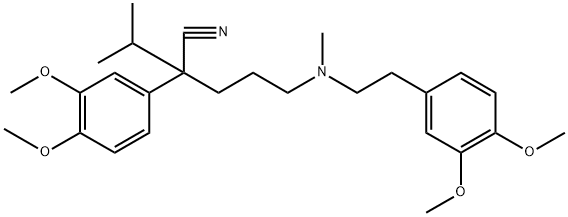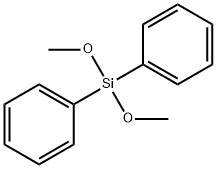PRODUCT Properties
| Melting point: | 25°C |
| Boiling point: | 243-246 °C (1.3 Pa) |
| Density | 1.1267 (rough estimate) |
| refractive index | 1.5448 |
| storage temp. | Keep in dark place,Inert atmosphere,Room temperature |
| solubility | DMSO: 100 mg/mL (219.97 mM) |
| form | Thick Oil |
| pka | 8.6(at 25℃) |
| color | Colourless |
| InChI | InChI=1S/C27H38N2O4/c1-20(2)27(19-28,22-10-12-24(31-5)26(18-22)33-7)14-8-15-29(3)16-13-21-9-11-23(30-4)25(17-21)32-6/h9-12,17-18,20H,8,13-16H2,1-7H3 |
| InChIKey | SGTNSNPWRIOYBX-UHFFFAOYSA-N |
| SMILES | C(C1C=CC(OC)=C(OC)C=1)(C#N)(C(C)C)CCCN(C)CCC1C=CC(OC)=C(OC)C=1 |
| CAS DataBase Reference | 52-53-9(CAS DataBase Reference) |
| NIST Chemistry Reference | Verapamil(52-53-9) |
| EPA Substance Registry System | Verapamil (52-53-9) |
Description and Uses
Verapamil, the classic calcium antagonist, has a negative inotropic, anti-ischemic, and conduction-delaying effect on the heart , . Its antiarrhythmic effect is based primarily on a prolongation of impulse conduction time in theAVnode and a reduction of frequency of impulse generation in the SA node.
Verapamil is primarily used as an antiarrythmic for treating ventricular arrhythmias; however, currently it is being forced out gradually by adenosine.
Safety
| Symbol(GHS) |  GHS07 |
| Signal word | Warning |
| Hazard statements | H302-H315-H319-H335 |
| Precautionary statements | P261-P280-P301+P312-P302+P352-P305+P351+P338 |
| Hazardous Substances Data | 52-53-9(Hazardous Substances Data) |
| Toxicity | LD50 oral in rat: 163mg/kg |





